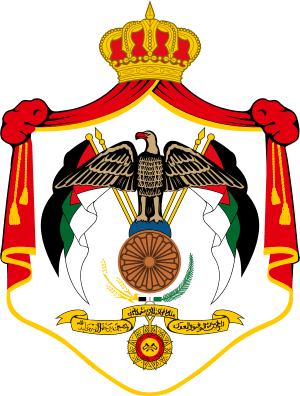Hussein of Jordan
| Hussein | |
|---|---|
 | |
| King of Jordan | |
| Reign | 11 August 1952 – 7 February 1999 |
| Predecessor | Talal |
| Successor | Abdullah II |
| Born |
14 November 1935 Amman, Transjordan |
| Died |
7 February 1999 (aged 63) Amman, Jordan |
| Burial | Raghadan Palace |
| Spouse |
Dina bint 'Abdu'l-Hamid (m. 1955; div. 1957) Antoinette Avril Gardiner (m. 1961; div. 1972) Alia Baha ed din Touqan (m. 1972–77; her death) Lisa Halaby (m. 1978–99; his death) |
| Issue Details and adopted children |
with Dina bint 'Abdu'l-Hamid: Princess Alia with Antoinette Avril Gardiner: Abdullah II Prince Faisal Princess Aisha Princess Zein with Alia al-Hussein: Princess Haya Prince Ali with Lisa Najeeb Halaby: Prince Hamzah Prince Hashim Princess Iman Princess Raiyah |
| House | Hashemite |
| Father | King Talal |
| Mother | Zein al-Sharaf Talal |
| Religion | Sunni Islam |
| Signature |
 |
Hussein bin Talal (Arabic: حسين بن طلال, Ḥusayn bin Ṭalāl; 14 November 1935 – 7 February 1999) was King[1] of Jordan from the abdication of his father, King Talal, in 1952, until his death. Hussein's rule extended through the Cold War and four decades of Arab–Israeli conflict.[2] He recognized Israel in 1994, becoming the second Arab head of state to do so (after Anwar Sadat in 1978/1979).
Hussein claimed to be a descendant of the Islamic prophet Muhammad through his belonging to the ancient Hashemite family.[2]
Early life
King Hussein was born in Amman on 14 November 1935 to King Talal bin Abdullah and Princess Zein al-Sharaf bint Jamil. After completing his elementary education in Amman, he was educated at Victoria College in Alexandria, Egypt. He proceeded to Harrow School in England, where he befriended his second cousin Faisal II of Iraq. He pursued further study at the Royal Military Academy Sandhurst.
.jpg)
On 20 July 1951, Prince Hussein traveled to Jerusalem to perform Friday prayers at the Al-Aqsa Mosque with his grandfather, King Abdullah I, where a Palestinian assassin opened fire on Abdullah and his grandson. Abdullah was killed, but the 15-year-old Hussein survived the assassination attempt, and according to witnesses, pursued the gunman. Witnesses reported that the gunman turned his weapon on the young prince, who was saved when the bullet was deflected by a medal on his uniform which had been given to him by his grandfather.[2]
Hussein was appointed Crown Prince of Jordan on 9 September 1951. Abdullah's eldest son, Talal, became King of Jordan, but thirteen months later was forced to abdicate owing to his mental state (European and Arab doctors diagnosed schizophrenia).[3] King Talal's son, Crown Prince Hussein, was proclaimed King of the Hashemite Kingdom of Jordan on 11 August 1952, succeeding at the age of 16. A Regency Council was appointed until he came of age. He was enthroned on 2 May 1953.[2]
Reign
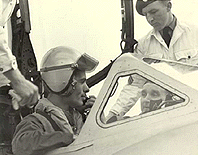
In March 1956, Hussein asserted Jordanian independence by dismissing Glubb Pasha as the commander of the Jordanian Army, and replacing all the British officers with Jordanians. This now mainly Bedouin army was fiercely loyal to him, due to tribal connections.
Hussein's rule was marked by repeated efforts to secure peace in the region. Meetings between King Hussein and Israeli foreign ministers Abba Eban and Golda Meir began on or before 1963. Jordan, sharing Israel's longest contiguous border, was interested in maintaining a peaceful coexistence with Israel. Avi Shlaim claims that Hussein's intentions "...throughout the 1960s was to see if there was any way to resolve the dispute with Israel peacefully."

King Hussein sought to understand Israel's position and preferred dialogue to the futility of war. Much of this desire grows out of the threat from other Arab states, specifically the Ba'athist regimes in Iraq and Syria and Nasser's ideology of Arab nationalism which had heavily influenced the Army. The first secret meeting took place on 24 September 1963 between King Hussein and Yaacov Herzog, a diplomat with wide experience and special emissary of prime minister Levi Eshkol.[4] Among other things such as discussions regarding water rights, the purpose of the meetings were to plan and support Israeli and Jordanian initiatives in combating Fatah guerrillas. He would later state "I told them I could not absorb a serious retaliatory raid, and they accepted the logic of this and promised there would never be one".[5]
On 13 November 1966, Israeli military conducted a major incursion into Jordanian territory, violating their secret agreement with King Hussein, in what became known as the Samu Incident. Two days later, in response to the incident, in a memo to U.S. President Lyndon B. Johnson, his Special Assistant Walt Rostow wrote: "retaliation is not the point in this case. This 3,000-man raid with tanks and planes was out of all proportion to the provocation and was aimed at the wrong target," and went on to describe the damage done to U.S. and Israeli interests:
They've wrecked a good system of tacit cooperation between Hussein and the Israelis. ... They've undercut Hussein. We've spent $500 million to shore him up as a stabilizing factor on Israel's longest border and vis-à-vis Syria and Iraq. Israel's attack increases the pressure on him to counterattack not only from the more radical Arab governments and from the Palestinians in Jordan but also from the Army, which is his main source of support and may now press for a chance to recoup its Sunday losses. ... They've set back progress toward a long term accommodation with the Arabs. ... They may have persuaded the Syrians that Israel didn't dare attack Soviet-protected Syria but could attack US-backed Jordan with impunity.[6]
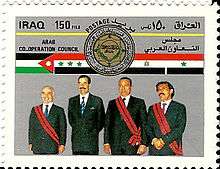
Perception of King Hussein's efforts to come to peaceful terms with Israel led to great dissatisfaction among some Arab leaders. President Gamal Abdul Nasser of Egypt often referred to Hussein as an, "imperialist lackey".[7] Army Commander-in-Chief General Sharif Zaid Ben Shaker warned in a press conference that "If Jordan does not join the war a civil war will erupt in Jordan".[8] In order to maintain credibility in the Arab world and maintain stability at home, on 30 May 1967, King Hussein signed a mutual defense treaty with Egypt.
Arab Federation of Iraq and Jordan
In the late 1950s, King Hussein entered Jordan into a joint partnership with Iraq called the Arab Federation of Iraq and Jordan. The Federation was formed on 14 February 1958, when King Faisal II of Iraq and his cousin, King Hussein of Jordan, sought to unite their two Hashemite kingdoms, as a response to the formation of the United Arab Republic. The union lasted only six months, being officially dissolved on 2 August 1958, after Faisal was deposed and assassinated by a military coup on 14 July.
Improving the lives of Jordanians
Early on, King Hussein concentrated on building an economic and industrial infrastructure that would improve the quality of life of Jordanians. During the 1960s, Jordan's main industries – including phosphate, potash and cement – were developed, and a network of highways was built throughout the kingdom.
Social indicators reflect King Hussein's successes. While in 1950, water, sanitation and electricity were available to only 10% of Jordanians, today these reach 99% of the population. In 1960 only 33% of Jordanians were literate, while by 1996, this number had climbed to 85.5%. In 1961, the average Jordanian received a daily intake of 2198 calories, and by 1992, this figure had increased by 37.5% to reach 3022 calories. UNICEF statistics show that between 1981 and 1991, Jordan achieved the world's fastest annual rate of decline in infant mortality – from 70 deaths per 1000 births in 1981 to 37 per 1000 in 1991, a fall of over 47%.
Six-Day War
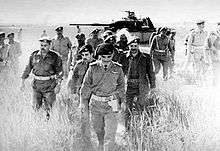
In June 1967, as a result of what later became known as the Six-Day War, Jordan lost control of the West Bank and saw its military shattered. In addition the country was, for a second time, overrun with many Palestinian refugees. As a result, Palestinian refugees who fled the 1948 and 1967 wars outnumbered Jordan's natural citizens. Most refugees were provided citizenship by the Jordanian government. Due to their sheer numbers, Palestinian factions in Jordan were able to exercise considerable authority, essentially governing some areas of Jordan, leading to many considering them a state within a state, eroding Hussein's central authority and disturbing the geopolitical stability of the Middle East.[9]
Black September
In September 1970, Hussein ordered the expulsion of the Palestine Liberation Organization by the Jordanian military after the Dawson's Field hijackings. The attacks on Palestinian fighters lasted until July 1971, when thousands of Palestinians were expelled, mostly fleeing to Lebanon.[10]
Yom Kippur War
After the 1967 War and the adoption of UN Security Council Resolution 242, Gunnar Jarring was appointed by the UN as a special envoy for the Middle East peace process, leading the Jarring Mission. Both Egypt and Israel responded to Jarring's proposals with support for a peace process, but the process did not move forward.[11] Egyptian president Anwar Sadat and Syrian president Hafez al-Assad met King Hussein in 1973 to discuss the possibility of war. Hussein, fearing another loss of territory to Israel, declined. Furthermore, Hussein was suspicious of Sadat's promise to PLO Chairman Yasser Arafat to hand over the West Bank to the Palestinians in the event of a victory, as he considered the West Bank to be Jordanian territory. On the night of 25 September, Hussein secretly flew to Tel Aviv by helicopter to warn Israeli Prime Minister Golda Meir of an impending Syrian attack.[12] "Are (the Syrians) going to war without the Egyptians, asked Mrs. Meir. The king said he didn't think so. 'I think they [Egypt] would cooperate'".[13]
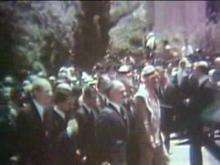
On 6 October 1973, Syria and Egypt attacked Israel without the aid of Jordan. A ceasefire was declared on 23 October, but fighting continued until January 1974. The Camp David Accords were signed by Egyptian President Anwar El Sadat and Israeli Prime Minister Menachem Begin on 17 September 1978, after 14 months of diplomatic efforts by Egypt, Israel, and the United States.
Peace with Israel
| Wikisource has original text related to this article: |
In 1994, Hussein concluded negotiations to end the official state of war with Israel resulting in the Israel–Jordan Treaty of Peace which he had begun negotiating in secret with the Israelis in the 1960s. Between 1963 and 1994 he had held at least 55 secret meetings with leading Israelis including at least seven prime and foreign ministers.[14]
Due to the close relationship forged with Israeli Prime Minister Yitzhak Rabin during the negotiations of the treaty, Hussein was invited to give a speech during Rabin's funeral.
_-_PM_Yizhak_Rabin_and_Jordan's_King_Hussein_greet_each_other.jpg)
Summit of the Peacemakers
On 13 March 1996, the "Summit of the Peacemakers" was held at Sharm el-Sheikh, Egypt hosted by Egyptian President Hosni Mubarak. In addition to King Hussein, Turkish President Süleyman Demirel, Israeli Prime Minister Shimon Peres, US President Bill Clinton, and Russian President Boris Yeltsin were present at the summit. The summit was convened with the expressed aim of putting the Israeli-Palestinian peace process back on track after a period of increased tension and hostility.
Hebron Agreement
Hussein was often involved in negotiations between the Israelis and Palestinians. His 11th-hour intervention in January 1997 is said to have brought Palestinian chairman Yasser Arafat and Israeli Prime Minister Benjamin Netanyahu to an agreement on the long-awaited withdrawal of Israeli troops from most of the West Bank town of Hebron.
Khaled Mashal assassination attempt
On 27 September 1997, the treaty was thrown into jeopardy when two Mossad agents attempted to poison Khaled Mashal, who was at the time living in Jordan. Condemning the attack as a violation of Jordanian sovereignty, King Hussein threatened to void the treaty if Mashal died. Jordanian doctors determined and administered the proper antidote in time, just as Israeli Prime Minister Benjamin Netanyahu bowed to international pressure and ordered Mossad to hand it over. Mashal recovered, and relations between Jordan and Israel thawed.[15]
Wye River Memorandum
In October 1998 U.S. President Bill Clinton invited Hussein, who was in the US undergoing chemotherapy treatment for cancer, to attend the Wye Plantation talks. Hussein received a standing ovation at the ceremony and praise from Clinton.
Illness
At the end of July 1998, it was made public that Hussein was diagnosed with lymphatic cancer by doctors at the Mayo Clinic. Hussein's lymphoma was of a type that responded to chemotherapy, which the King had already begun and his physicians were optimistic he could be cured. Speaking on Jordanian television via satellite, Hussein reassured the Jordanian people that the cancer was curable. Nevertheless, he looked fragile and pale. It was the 62-year-old monarch's second bout with cancer; he lost a kidney to the disease in 1992.[16]
On his way back to Jordan in January 1999, Hussein stopped in London.[17] Doctors advised him to rest and stay in England for a few weeks, as he was still too fragile to travel. According to Jordanian government sources, Hussein stated that:
- "I need very much to feel the warmth of my people around me, there is work to be done and I will get the strength from my people to finish the business."[18]
Upon returning to Jordan Hussein was greeted by family members, ministers, parliament members, foreign dignitaries and crowds of Jordanian citizens, estimated by Jordanian government officials at 3 million.[9]
Death
On 24 January 1999, Hussein made a change to his will revising the law of succession, which earlier had designated his brother Hassan as heir-apparent, in favour of his eldest son Abdullah. He abruptly returned to the U.S. clinic on 25 January 1999 for further treatment undergoing a failed bone marrow transplant after which he returned to Jordan.
On 7 February 1999, King Hussein died of complications related to non-Hodgkin's lymphoma. He was, at the time of his death, one of the longest-serving leaders in international politics.[2] He had been the King of Jordan for over 46 years, during which he was an important actor in various Middle East conflicts. Just prior to his death, during an interview with CNN's Christiane Amanpour, Hussein expressed his opinion that a peaceful resolution would eventually be reached in the Arab–Israeli conflict.[19]
King Hussein's funeral was held on 8 February 1999 in the presence of all five of his sons, foreign dignitaries and statesmen, and an estimated 800,000 Jordanians.[20][21] The UN General Assembly held an Emergency Special Session in "Tribute to the Memory of His Majesty the King of Jordan" on the same day.[22]
King Hussein was succeeded as king by his eldest son Abdullah II of Jordan.
Tributes
- "He won the respect and admiration of the entire world and so did his beloved Jordan. He is a man who believed that we are all God's children, bound to live together in mutual respect and tolerance." (U.S. President Bill Clinton)[23]
- "He was an extraordinary and immensely charismatic persuader for peace. At the peace talks in America when he was extremely ill, he was there, talking to both sides, urging them forward, telling them nothing must stand in the way of peace." (UK Prime Minister Tony Blair)[23]
- "President Yasser Arafat and the Palestinian people and leadership have received with great sorrow and pain the news," it said in a statement. (The Palestinian Authority)
- "He was a generous brother and a dear friend," said a statement. (Egyptian President Hosni Mubarak.)
- South African President Nelson Mandela believed the death would be "deeply mourned by all peace-loving people."
- UN Secretary General Kofi Annan paid tribute to the late king, praising him for his "lifelong struggle to bring peace".
Personal life
Hussein was an enthusiastic ham radio operator and an Honorary Member of The Radio Society of Harrow and a life member of the American Radio Relay League (ARRL)[24] [25] (callsign JY1). Hussein was popular in the amateur radio community and insisted that fellow operators refer to him without his title.
Hussein was a trained pilot, flying both airplanes and helicopters as a hobby. In a 1999 interview Henry Kissinger described being flown by Hussein, saying that "...he was a daring pilot, and he would be zooming along at treetop level, and my wife, in order to be politely insistent would say, "You know I didn't know helicopters could fly so low" "Oh!" said the king, "They can fly lower!" and went below tree top level just skimming along on the ground. That really aged me rapidly."[26]
Hussein was also a collector of motorcycles.[26] The cover of the paperback version of Queen Noor's book Leap of Faith: Memoirs of an Unexpected Life features a photo of the King and Queen riding a Harley-Davidson motorcycle.
Family
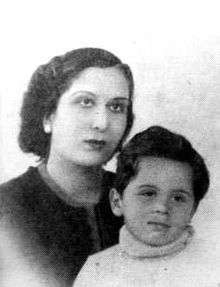
King Hussein married four times:
- Sharifa Dina bint 'Abdu'l-Hamid (born 1929), on 18 April 1955. She was an Egyptian-born third cousin of King Hussein's father, King Talal. A graduate of Cambridge University and a former lecturer in English literature at Cairo University. The marriage was arranged and they separated in 1956 and were divorced in 1957, at which time Princess Dina became known as Her Royal Highness Princess Dina Abdul-Hamid of Jordan. She became an Egyptian citizen in 1963, and in October 1970, Princess Dina of Jordan married Lieut-Colonel Asad Sulayman Abd al-Qadir, alias Salah Taamari, a Palestinian guerrilla commando who became a high-ranking official in the Palestine Liberation Organization.
- Daughter: H.R.H. Princess Alia bint Al Hussein (born 1956). Married first to Mr. Nasser Wasfi Mirza, they have one child together, a son, Prince Hussein. They divorced in 1987. She remarried in 1988 to Sayyid Mohammed Al-Saleh; they have two sons, Talal and Abdulhamid.
- Antoinette Avril Gardiner ("Toni Gardiner", born 1941), on 25 May 1961, titled HRH Princess Muna Al-Hussein from marriage. An award-winning field hockey player and daughter of a British army officer, Lieutenant-Colonel Walter Percy Gardiner, she was given the title Her Royal Highness Princess Muna al-Hussein and retained this title after they divorced on 21 December 1971.
- Children:
- His Majesty Abdullah II, King of The Hashemite Kingdom of Jordan (born 1962). The current King of the Hashemite Kingdom of Jordan. Married to Rania Al-Yassin. They have four children: Crown Prince Hussein, Princess Iman, Princess Salma and Prince Hashem.
- His Royal Highness Prince Faisal bin Al Hussein of Jordan (born 1963). Lieutenant-General, former Commander of Royal Jordanian Air Force. Currently Deputy Supreme Commander of the Jordan Armed Forces. Married first to Alia Tabbaa (now known as Her Royal Highness Princess Alia Tabbaa). They have four children: Princess Ayah, Prince Omar, and twins Princess Sara and Princess Aisha. They divorced in 2008. He remarried in 2010 to Sara Qabbani and divorced in 2013. He is now married to Zeina Lubadeh.
- Her Royal Highness Princess Aisha bint Hussein (born 1968). Brigadier-General of Jordan's Royal Jordanian Armed Forces. Married to Mr. Zeid Juma, they have two children, a son Aoun and a daughter Muna. They are now divorced.
- Her Royal Highness Princess Zein bint Hussein (born 1968, Aisha's twin). Married to Mr. Majdi Al-Saleh, they have two children: a son Jaafar and a daughter Jumana, and an adopted daughter called Tahani Al Shawan.
- Children:
- Alia Baha ud-din Toukan, H.M. Queen Alia Al-Hussein (1948–1977), on 24 December 1972, after whom Jordan's international airport (Queen Alia International Airport) is named. She died in a helicopter crash in Amman, Jordan in 1977. An Egyptian-born Palestinian and daughter of Jordan's first ambassador to the United Nations, Sayyid Baha ud-din Toukan.
- Children:
- Her Royal Highness Princess Haya bint Hussein (born 1974). President of the Fédération Equestre Internationale 2008–2014.[27] Married to Sheikh Mohammed bin Rashid Al Maktoum, Vice President and Prime Minister of the United Arab Emirates and Ruler of Dubai. They have two children: Sheikha Al Jalila and Sheikh Zayed.[28]
- His Royal Highness Prince Ali bin Al Hussein (born 1975). Married to Rym Brahimi now known as Her Royal Highness Princess Rym al-Ali. They have two children, HRH Princess Jalilah and HRH Prince Abdullah.
- Adopted daughter: Abir Muhaisen, (born 1972, adopted 1976).
- Children:
_by_Erling_Mandelmann.jpg)
- Lisa Najeeb Halaby (born 1951), renamed Queen Noor al Hussein on her conversion to Islam, married in Amman on 15 June 1978. An Arab-American of Syrian descent, daughter of Najeeb Halaby.
- Children:
- His Royal Highness Prince Hamzah bin al Hussein of Jordan (born 1980). Married first to Her Royal Highness Princess Noor bint Asem of Jordan, third daughter of His Royal Highness Prince Asem Abu Bakar of Jordan, by his first wife, Princess Firouzeh Vokhshouri. Princess Noor became Her Royal Highness Princess Noor Al Hamzah of Jordan upon her marriage. Together they have a daughter, Princess Haya. They divorced in 2009. He remarried in 2012 to Her Royal Highness Princess Basma Bani-Ahmad; they have two daughters, Princess Zein and Princess Noor.
- His Royal Highness Prince Hashim bin Al Hussein of Jordan (born 1981). Married to Her Royal Highness Princess Fahdah. They have three daughters and one son: HRH Princess Halaah, HRH Princess Rayet Al Noor, HRH Princess Fatima Al-Alia and HRH Prince Hussein Haidara.
- Her Royal Highness Princess Iman bint Hussein (born 1983). Married to Zaid Azmi Mirza, together they have a son, Omar.
- Her Royal Highness Princess Raiyah bint Hussein (born 1986).
- Children:
| Ancestors of Hussein of Jordan | |||||||||||||||||||||||||||||||||||||||||||||||||||||||||||||||||||||||||||||||||||||||||||||||||||||||||||||||||||||||||||||||||||||||||||||||||||||||||||||||||||||||||||||||||||||||||||||||||||||||||||||||||||||||||||||||||||||||||||||||||||||||||||||||||||||||||||||||||||||||||||||||||||||||||||||||||||||||||||||||||||||||||||||||||||||||||||||||||||||||||||||||||||||||||||||||||||
|---|---|---|---|---|---|---|---|---|---|---|---|---|---|---|---|---|---|---|---|---|---|---|---|---|---|---|---|---|---|---|---|---|---|---|---|---|---|---|---|---|---|---|---|---|---|---|---|---|---|---|---|---|---|---|---|---|---|---|---|---|---|---|---|---|---|---|---|---|---|---|---|---|---|---|---|---|---|---|---|---|---|---|---|---|---|---|---|---|---|---|---|---|---|---|---|---|---|---|---|---|---|---|---|---|---|---|---|---|---|---|---|---|---|---|---|---|---|---|---|---|---|---|---|---|---|---|---|---|---|---|---|---|---|---|---|---|---|---|---|---|---|---|---|---|---|---|---|---|---|---|---|---|---|---|---|---|---|---|---|---|---|---|---|---|---|---|---|---|---|---|---|---|---|---|---|---|---|---|---|---|---|---|---|---|---|---|---|---|---|---|---|---|---|---|---|---|---|---|---|---|---|---|---|---|---|---|---|---|---|---|---|---|---|---|---|---|---|---|---|---|---|---|---|---|---|---|---|---|---|---|---|---|---|---|---|---|---|---|---|---|---|---|---|---|---|---|---|---|---|---|---|---|---|---|---|---|---|---|---|---|---|---|---|---|---|---|---|---|---|---|---|---|---|---|---|---|---|---|---|---|---|---|---|---|---|---|---|---|---|---|---|---|---|---|---|---|---|---|---|---|---|---|---|---|---|---|---|---|---|---|---|---|---|---|---|---|---|---|---|---|---|---|---|---|---|---|---|---|---|---|---|---|---|---|---|---|---|---|---|---|---|---|---|---|---|---|---|---|---|---|---|---|---|---|---|---|---|---|---|---|---|---|---|---|---|---|---|---|---|---|---|---|---|---|---|---|---|---|---|---|---|---|---|---|---|---|---|
| |||||||||||||||||||||||||||||||||||||||||||||||||||||||||||||||||||||||||||||||||||||||||||||||||||||||||||||||||||||||||||||||||||||||||||||||||||||||||||||||||||||||||||||||||||||||||||||||||||||||||||||||||||||||||||||||||||||||||||||||||||||||||||||||||||||||||||||||||||||||||||||||||||||||||||||||||||||||||||||||||||||||||||||||||||||||||||||||||||||||||||||||||||||||||||||||||||
Honours
- National honours
-
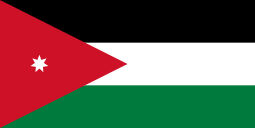 Order of al-Hussein bin Ali
Order of al-Hussein bin Ali -
 Supreme Order of the Renaissance
Supreme Order of the Renaissance -
 Order of the Star of Jordan
Order of the Star of Jordan -
 Order of Independence
Order of Independence
- Foreign honours
-
.svg.png) King Faisal II Coronation Medal – 2 May 1953
King Faisal II Coronation Medal – 2 May 1953 -
.svg.png) Collar of the Grand Order of the Hashemites – 1953
Collar of the Grand Order of the Hashemites – 1953 -
.svg.png) Grand Cordon of the Order of the Two Rivers (Order of Al Rafidain) – 1953
Grand Cordon of the Order of the Two Rivers (Order of Al Rafidain) – 1953 -
 Honorary Knight Grand Cross of the Royal Victorian Order (GCVO) – 1953
Honorary Knight Grand Cross of the Royal Victorian Order (GCVO) – 1953 -
 Bailiff Grand Cross of the Venerable Order of Saint John of Jerusalem (GCStJ) – 1955
Bailiff Grand Cross of the Venerable Order of Saint John of Jerusalem (GCStJ) – 1955 -
.svg.png) Grand Collar of the Order of the Nile – 1955
Grand Collar of the Order of the Nile – 1955 -
.svg.png) Grand Cross of the Order of Military Merit, with white distinctive – 3 June 1955[29]
Grand Cross of the Order of Military Merit, with white distinctive – 3 June 1955[29] -
.svg.png) Grand Cordon of the Order of Umayyad of Syria – 1955
Grand Cordon of the Order of Umayyad of Syria – 1955 -
 Grand Cordon of the Order of Independence of Tunisia – 1956
Grand Cordon of the Order of Independence of Tunisia – 1956 -
 Collar special class of the Order of the Propitious Clouds – 1959[30][31]
Collar special class of the Order of the Propitious Clouds – 1959[30][31] -
.svg.png) Collar of the Order of Pahlavi – 1959
Collar of the Order of Pahlavi – 1959 -
.svg.png) Commemorative Medal of the 2500th Anniversary of the founding of the Persian Empire – 14 October 1971[32][33]
Commemorative Medal of the 2500th Anniversary of the founding of the Persian Empire – 14 October 1971[32][33] -
 Collar of the Order of Muhammad of Morocco – 1960
Collar of the Order of Muhammad of Morocco – 1960 -
.svg.png) Knight of the Order of Solomon of the Ethiopian Empire – 1960
Knight of the Order of Solomon of the Ethiopian Empire – 1960 -
.svg.png) Collar of the Order of Idris I – 1960
Collar of the Order of Idris I – 1960 -
 Extraordinary class of the Order of Merit of Lebanon – 1960
Extraordinary class of the Order of Merit of Lebanon – 1960 -
 Grand Collar of the Order of Abdulaziz al Saud – 1960
Grand Collar of the Order of Abdulaziz al Saud – 1960 -
 Collar of the Order of the Badr Chain – 1960
Collar of the Order of the Badr Chain – 1960 -
 Collar of the Order of National Merit of Guinea – 1960
Collar of the Order of National Merit of Guinea – 1960 -
.svg.png) Grand Cross of the Order of the Redeemer – 1960
Grand Cross of the Order of the Redeemer – 1960 -
.svg.png) Collar of the Order of Leopold – 1964
Collar of the Order of Leopold – 1964 -
 Grand Cross of the Order of the Netherlands Lion – 1964
Grand Cross of the Order of the Netherlands Lion – 1964 -
 Knight Grand Cross with Collar of the Order of St Olav – 1964
Knight Grand Cross with Collar of the Order of St Olav – 1964 -
 Collar of the Order of the Tower and Sword (GCollTE) – 1964
Collar of the Order of the Tower and Sword (GCollTE) – 1964 -
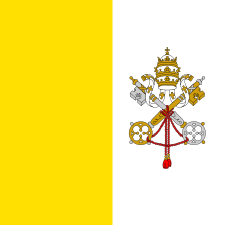 Knight of the Order of the Golden Spur of the Vatican – 1964
Knight of the Order of the Golden Spur of the Vatican – 1964 -
 Honorary Recipient of the Order of the Crown of the Realm (DMN) – 1965[34]
Honorary Recipient of the Order of the Crown of the Realm (DMN) – 1965[34] -
 Recipient of the Royal Victorian Chain – 1966
Recipient of the Royal Victorian Chain – 1966 -
 Grand Cross of the Legion of Honour – 1967
Grand Cross of the Legion of Honour – 1967 -
 Grand Cross special class of the Order of Merit of the Federal Republic of Germany – 1967
Grand Cross special class of the Order of Merit of the Federal Republic of Germany – 1967 -
 Collar of the Order of Mubarak the Great – 1974
Collar of the Order of Mubarak the Great – 1974 -
 Collar of the Order of the Chrysanthemum – 10 March 1976
Collar of the Order of the Chrysanthemum – 10 March 1976 -
 Collar of the Order of Khalifa – 1976
Collar of the Order of Khalifa – 1976 -
 Grand Collar of the Ancient Order of Sikatuna – 1 March 1976 [35]
Grand Collar of the Ancient Order of Sikatuna – 1 March 1976 [35] -
 Grand Star of the Decoration of Honour for Services to the Republic of Austria – June 1976[36][37]
Grand Star of the Decoration of Honour for Services to the Republic of Austria – June 1976[36][37] -
 Collar of the Order of Isabel the Catholic (Spain) – 18 March 1977[38]
Collar of the Order of Isabel the Catholic (Spain) – 18 March 1977[38] -
 Collar of the Order of Independence of Qatar – 1978
Collar of the Order of Independence of Qatar – 1978 -
 Great Star of the Order of the Yugoslav Star – 1979
Great Star of the Order of the Yugoslav Star – 1979 -
 Knight Grand Cross with Collar of the Order of Merit of the Italian Republic – 26 November 1983[39]
Knight Grand Cross with Collar of the Order of Merit of the Italian Republic – 26 November 1983[39] -
 Honorary Knight Grand Cross of the Order of the Bath (GCB) – 1984[40]
Honorary Knight Grand Cross of the Order of the Bath (GCB) – 1984[40] -
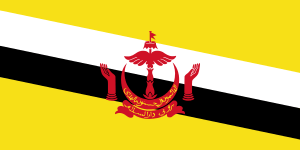 Collar of the Royal Family Order of the Crown of Brunei (Brunei) – 1984
Collar of the Royal Family Order of the Crown of Brunei (Brunei) – 1984 -
 Knight of the Order of the Golden Fleece – 22 March 1985[41]
Knight of the Order of the Golden Fleece – 22 March 1985[41] -
 Knight of the Order of Seraphim – 15 September 1989
Knight of the Order of Seraphim – 15 September 1989 -
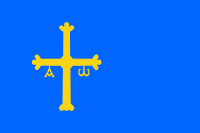 Prince of Asturias Award for Peace (Spain) – 15 September 1995[42]
Prince of Asturias Award for Peace (Spain) – 15 September 1995[42] -
 Knight of the Order of the Elephant (Denmark) – 27 April 1998
Knight of the Order of the Elephant (Denmark) – 27 April 1998
Streets, squares, parks
-
 Park Hussein Bin Talal in Grozny (Russia)
Park Hussein Bin Talal in Grozny (Russia) -
 Avenue Roi Hussein 1er de Jordanie in the 16th arrondissement of Paris (France)
Avenue Roi Hussein 1er de Jordanie in the 16th arrondissement of Paris (France) -
 Street Hussein Bin Talal in Astana(Kazakhstan)
Street Hussein Bin Talal in Astana(Kazakhstan)
Bibliography
- Uneasy Lies the Head. London: William Heinemann Ltd. (1962)
- My "War" with Israel. London: Peter Owen. (1969) ISBN 0-7206-0310-2
- Mon Métier de Roi. Paris: R. Laffont (1975)
References
- ↑ "The Hashemite Royal Family". kinghussein.gov.jo.
- 1 2 3 4 5 "King Hussein is dead". CNN. 7 February 1999.
- ↑ "The Life of King Hussein". Royalty. Retrieved 1 July 2010.
- ↑ Shlaim 2007, p. 194–203 (Lion of Jordan: The Life of King Hussein in War and Peace).
- ↑ Bowen 2003, p. 26 (citing Amman Cables 1456, 1457, 11 December 1966, National Security Files (Country File: Middle East), LBJ Library (Austin, Texas), Box 146).
- ↑ "Memorandum From the President's Special Assistant (Rostow) to President Johnson". Washington. 15 November 1966. Retrieved 22 October 2005.
- ↑ BBC on this Day, Egypt and Jordan unite against Israel. Retrieved 8 October 2005.
- ↑ quoted in Mutawi 2002, p. 102.
- 1 2 "Highlights of King Hussein's life". CNN. Retrieved 4 May 2010.
- ↑ Shlaim, Avi (2007). Lion of Jordan; The Life of King Hussein in War and Peace. London: Allen Lane. pp. 301–302. ISBN 978-0-7139-9777-4.
- ↑ "The Jarring initiative and the response," Israel's Foreign Relations, Selected Documents, vols. 1–2, 1947–1974 . Retrieved 9 June 2005.
- ↑ Kumaraswamy, P.R. (2013-01-11). Revisiting the Yom Kippur War. Routledge. p. 14. ISBN 9781136328954. Retrieved 15 July 2014.
- ↑ Rabinovich, The Yom Kippur War, Schocken Books, 2004. Page 50
- ↑ The Economist, 24 November 2007, p.88
- ↑ "Kill Him Silently". Al Jazeera World. Al Jazeera English. 30 January 2013. Retrieved 30 January 2013.
- ↑ "King Hussein's eldest son handed power in Jordan". tribunedigital-baltimoresun.
- ↑ "King to address Jordanians tonight ahead of Tuesday return". Jordan embassy. 16 January 1999. Archived from the original on 31 August 2006. Retrieved 1 July 2010.
- ↑ Mideastnews.com; 8 February 1999
- ↑ CNN/Time "Newsstand" Interviewer: Christiane Amanpour. 24 January 2000
- ↑ PBS NewsHour with Jim Lehrer, 1999 Online NewsHour
- ↑ "Geocities.com". Archived from the original on 21 October 2009. Retrieved 2009-10-21.
- ↑ "U.N. Tribute to the Memory of His Majesty King Hussein Ibn Talal of the Hashemite Kingdom of Jordan. 8 February 1999". UN. Retrieved 1 July 2010.
- 1 2 "7Feb1999 (King Hussein dies)". BBC News. 1999-02-07. Retrieved 2014-06-09.
- ↑ "In Memory of JY1". Retrieved 22 November 2014.
- ↑ "The Radio Society of Harrow - Dedication to JY1". G3EFX. Retrieved 5 March 2015..
- 1 2 Nightline: Hussein of Jordan, ABC Evening News for Friday, Feb 05, 1999
- ↑ "International sports community pays tribute to FEI Honorary President HRH Princess Haya". FEI.
- ↑ The Office of HRH Princess Haya Bint Al Hussein. "HRH Princess Haya Biog - The Official Website of HRH Princess Haya Bint Al Hussein". princesshaya.net.
- ↑ "Boletín Oficial del Estado" (PDF). Retrieved 2014-06-09.
- ↑ List of orders, decorations and medals of the Republic of China
- ↑ Chih-Ping Chen
- ↑ "Badraie". Badraie. Retrieved 2014-06-09.
- ↑ "Badraie". Retrieved 2014-06-09.
- ↑ "Senarai Penuh Penerima Darjah Kebesaran, Bintang dan Pingat Persekutuan Tahun 1965." (PDF).
- ↑ "President's Week in Review: March 1 – March 9, 1976". Official Gazette of the Republic of the Philippines.
- ↑ "Reply to a parliamentary question" (PDF) (in German). p. 454. Retrieved 15 October 2012.
- ↑ Aparchive
- ↑ "Boletín Oficial del Estado" (PDF). Retrieved 2014-06-09.
- ↑ "S.M. Hussein Re di Giordania – Decorato di Gran Cordone" (in Italian). Retrieved 15 October 2012.
- ↑ "jordan3". Royalark.net. Retrieved 2014-06-09.
- ↑ "Boletín Oficial del Estado" (PDF). Retrieved 2014-06-09.
- ↑ "El rey Husein I de Jordania, premio Príncipe de Asturias de la Concordia". El Pais. 1995-09-16. Retrieved 2014-06-09.
External links
| Wikiquote has quotations related to: King Hussein |
| Wikimedia Commons has media related to Hussein I of Jordan. |
| Wikisource has original works written by or about: Hussein of Jordan |
- Royal Hashemite Court - Hussein Remembered video
- Interview with King Hussein from the Dean Peter Krogh Foreign Affairs Digital Archives
- Ancestry of Antoinette Avril Gardiner (b. 1941)
- Obituary, NY Times, 8 February 1999 Death of a King; Cautious King Took Risks In Straddling Two Worlds
- A Living Tribute to the Legacy of King Hussein I – official Royal Jordanian memorial website
- The short film King Hussein of Jordan (1980) is available for free download at the Internet Archive
| Regnal titles | ||
|---|---|---|
| Preceded by Talal |
Hashemite King of Jordan 1952–1999 |
Succeeded by Abdullah II |
| Awards | ||
| Preceded by Yitzhak Rabin |
Ronald Reagan Freedom Award 1995 |
Succeeded by Bob Hope |

